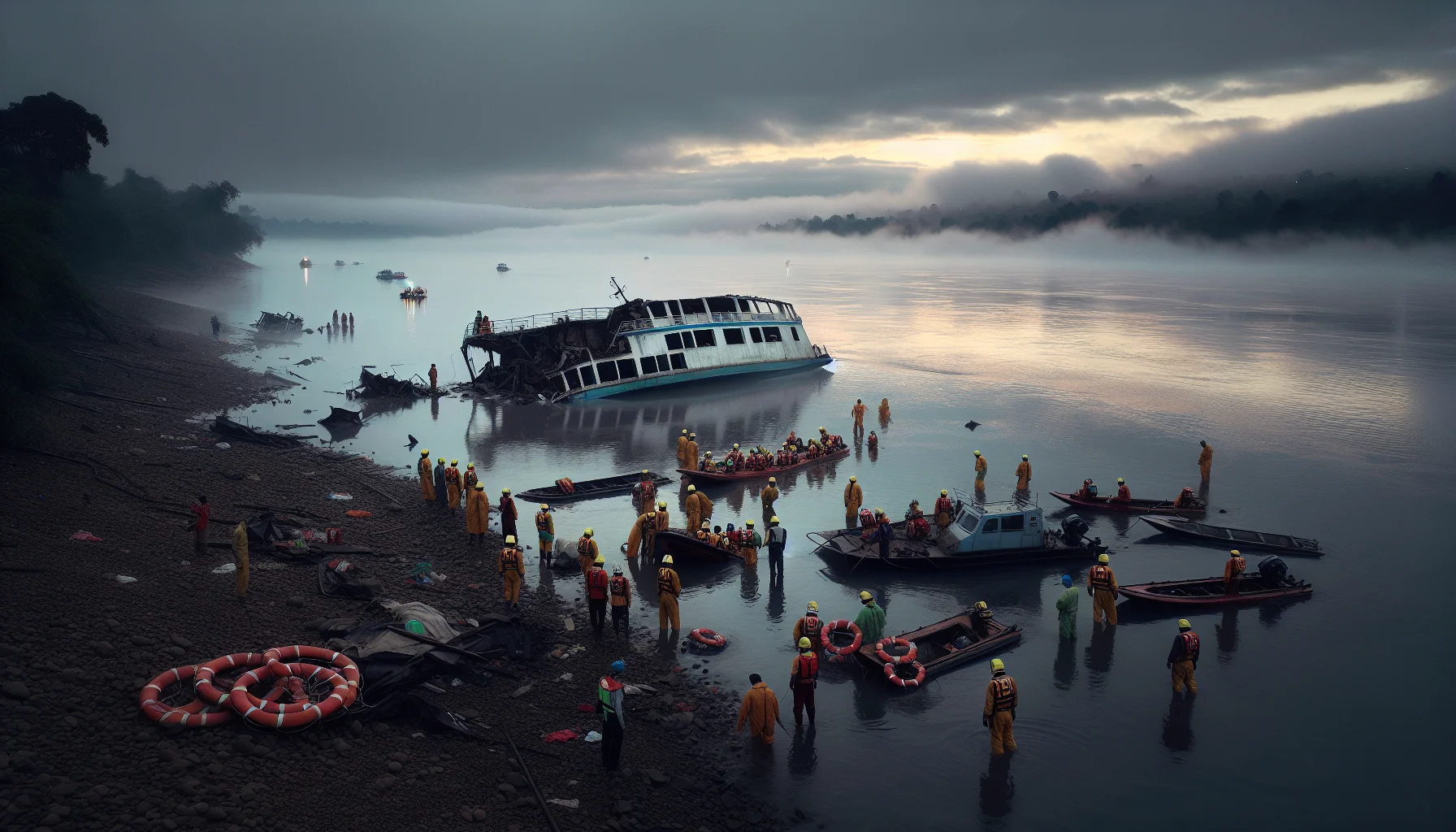
2012 Assam Ferry Sinking
by: The Calamity Calendar Team
May 1, 2012
A River's Whisper of Tragedy
The Brahmaputra River snakes through Assam with the power and grace of nature in its rawest form. But beneath this majesty lies a capricious force, one that routinely tests the resilience of those who call its banks home. On May 1, 2012, the river added another dark mark to its history—a chilling whisper in the lore of Assam that would ripple through time.
The Lifeline and Predator
For many living along the Brahmaputra, ferries are not merely a choice but a lifeline. With scarce bridges and a tendency of the river to swell and churn unexpectedly, these ferries become moving worlds of their own, packed with commuters, produce, animals, and the hope of reaching tomorrow. Yet, it is no secret that these vessels are beset by issues—overcrowding being as commonplace as the undercurrent itself, while maintenance often takes a back seat.
On that ill-fated day, one such ferry was advancing through the river near Dhubri district, pushing the boundaries of safety with nearly 350 souls aboard a vessel meant for around 225. The sky, once a dull canvas, rapidly turned malevolent, hinting at the forthcoming struggle between man and nature.
Nature's Wrath Unleashed
By mid-afternoon, a storm brazenly took center stage. The wind's roar grew, stripping the world of sound, while the river beneath manifested its fury, signaling a tempest not just of water, but of fate. At approximately 4:20 PM, the storm tightened its grip, and the ferry, beleaguered and burdened, groaned before succumbing. It split like a log under an axe, flinging its occupants into the swirling abyss.
In those frantic seconds, cries for help rose above the chaos, but nature drowned them out, leaving a chilling silence to fill the void.
The Night's Desolate Dance
As darkness crept in, so did an overwhelming sense of loss. Immediate rescue was hampered by the storm's relentless assault, postponed until courage and light pierced through once more. The local authorities, joined by rescue teams, pressed on tirelessly, driven by the urgency etched upon their hearts. Still, the harsh arithmetic of disaster could not be denied; over 103 bodies were eventually recovered. Another hundred remained shrouded in the river's mysterious depths, leaving families to cling to fading glimmers of hope.
Thanks for subscribing!
Rescue efforts continued against the clock and nature’s persistence. Lines of silhouetted men could be seen along the riverbank, scanning the waters as moths danced around the beams of searchlights.
Inquiries and Implications
The days that followed brought grief, introspection, and questions that echoed through the corridors of power. Why did this happen—and why again? Relief measures trickled in—the government announced support for the victims’ families and initiated inquiries. In the backdrop, calls for change mounted but soon faded, as is often the plight of policy amidst public amnesia.
The tragedy underscored the need for stringent safety standards, reinforcing vessels, and enforcing capacity limits to ward against such calamities. Yet, meaningful change, like the Brahmaputra itself, has been slow, meandering through bureaucratic boulders.
A Legacy Carried Forward
The Assam ferry sinking is now a harsh stamp in the annals of transit tragedies, a mnemonic of vulnerability. Its legacy serves as a reminder of the pressing need for preparedness, especially with Assam's monsoons rhythmically beckoning with an unpredictable mix of beauty and menace. Each storm hints at what the river is capable of, a whisper in the wind that demands listening.
Through continued efforts, ferry safety has gained incremental progress. Awareness about the importance of emergency protocols during monsoon has grown, but the shadow of the past lingers, a reminder that the waters, while serving as a lifeline, will forever demand respect and vigilance.
As the Brahmaputra flows on, so too does the memory of those lost, woven into the river's currents, a silent prayer in a ceaseless journey, echoing onward.
Stay in the Loop!
Become a Calamity Insider and get exclusive Calamity Calendar updates delivered straight to your inbox.
Thanks! You're now subscribed.